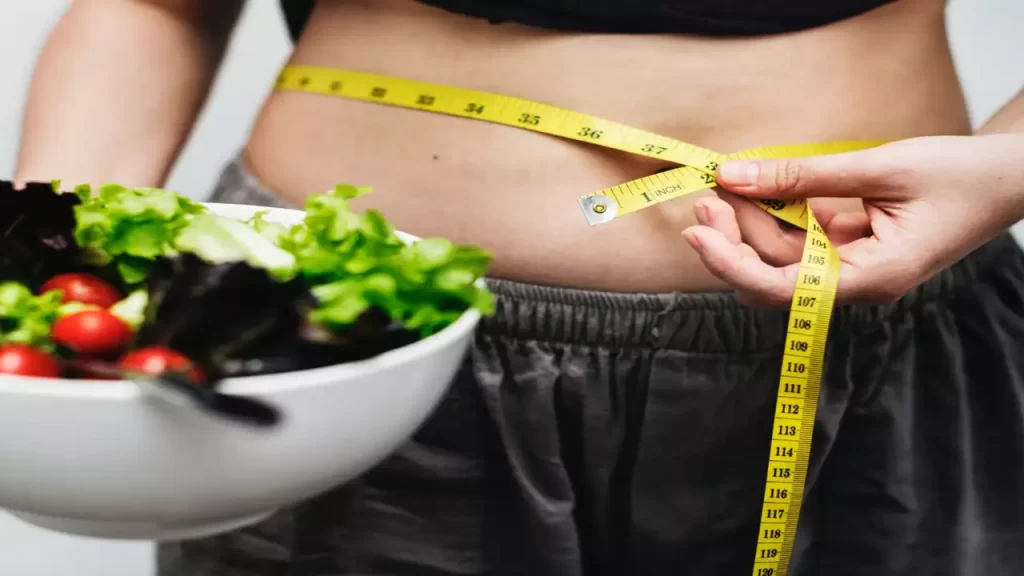The Ultimate Guide to an Effective Weight Loss Diet Plan

If you’ve ever tried to lose weight, you’ll know that it can be hard to achieve amid the outpouring of diet plans and conflicting advice. The right diet plan can help make your weight loss a sustainable and ongoing success. This guide is focused on how you can develop such a plan, including nutritional, meal planning and lifestyle management strategies that can help you achieve your goals while maintaining good health and wellbeing.
Understanding the Basics of Nutrition
Understanding Macronutrients and Micronutrients
Of these macronutrients, all play a role as fuel for energy. Carbs are the most important source of fuel. Three sources of carbs are fat making, starch making and sugar making. Complex carbs are a preferred source of energy, as they are found in whole grains and vegetables, compared with simple sugars such as those found in soda and candy that don’t give a feeling of fullness despite having more calories. Second, proteins are important because they help repair and build muscles, which benefits all athletes. Last, fats are necessary for hormone production and cell health, but the key here is to choose healthy fats found in avocados, nuts and fish. Micronutrients, on the other hand, consist of vitamins and minerals, and they play a role in diverse functions, including immune response, oxygen transport throughout the body, bone growth, energy production, fertility, blood clotting and muscle contractions – just to name a few! All these micronutrients are important, so the key is to eat balanced, whole, unprocessed foods that provide you with a diverse array of food choices.
The Importance of Portion Control and Calorie Management
Overall, portion control is an important and inevitable feature of any successful diet. It’s possible to gain weight even eating only healthy foods! Thus, learning what appropriate portion sizes are is essential to controlling your caloric intake, the ECU for body weight. In this regard, it’s important to learn how many calories your body needs each day, depending on your age, gender, activity level and weight loss goals. One important tenet of dieting is learning how to create a caloric deficit in your body, meaning consuming fewer calories than you expend. The key is not to be too restrictive in your caloric deficit, as this can lead to deficiencies and lethargy. Using food diaries or smartphone apps, you can keep track of your caloric intake, making sure you are consuming at least bare minimum requirements for vitamins and minerals while also creating a caloric deficit to help you lose weight.
Designing a Balanced Meal Plan
Incorporating a Variety of Food Groups
A variety of food groups in a balanced meal plan allows you to gain a variety of nutrients daily. For instance, every portion of our meals, from breakfast to lunch and supper, should be equally balanced whenever possible. Should you prefer cereals for breakfast with milk, include fresh or dry fruits, and a handful of nuts. Your cereals with fruit and nuts would give you complex carbs, fibre, proteins and healthy fats. For lunch, try a mixed salad liking it to chicken or tofu for the added protein and dressing on the side. Dinner often includes a serving of fish with a bowl of quinoa and steamed vegetables. A balanced diets helps to avoid boredom since it will provide for a new addition of food groups, hence new flavours.
Planning Meals and Snacks
Healthy meal planning means being thoughtful about how you schedule meals and snacks, when and where you’ll eat, and what you’ll consume. Let’s start with deciding when you will eat each meal. What’s your schedule for the day, week, or upcoming weekend? Do you have any social obligations that may cause you to get off track? Once you put your plan on paper, update it throughout the week. Next, figure out what you’ll eat. Consider healthy foods you really like, and those you don’t mind. Here’s a way to be thoughtful about planning your meals. This will also help you stick to your targeted calories: Prepare dinner from an actual recipe one night This week, I’ll meal plan for three dinners. And now, just three lunch ideas: A big salad’s good, and so is a hummus sandwich with a side of carrots Yes, this planning thing takes a bit of effort and might require you to do something different from what you’ve been doing. And here’s something else to keep in mind: We frequently overeat when we’re not thinking ahead, when we let hunger take over, or if we’re emotional. A rule of thumb for meal planning is that the better you’re doing at thinking about what you eat, the more consistent (and easier) you’ll get at eating regularly and demonstrating willpower if you’re constantly slipping.
The Role of Hydration
Benefits of Staying Hydrated
Also, if you are not drinking enough you are not eliminating. Water is necessary for digestion and nutrient absorption. It is also necessary for urination, bowel movements and for maintaining the fluidity of the mucus membranes all through the digestive tract, helping your body to get rid of waste. Being hydrated will help you feel less hungry because often people think they are hungry when they are actually thirsty. However, drinking water beforehand can help you fill up so you eat less. Hydration keeps your metabolism functioning properly and makes it easier for your body to burn fat. Dehydration can slow your metabolism. When you are hydrated your weight training and your cardio will be better because you can do more, and your heart can pump more blood and oxygen to your muscles, which will ultimately help you burn more calories.
How Much Water Should You Drink?
Specific needs can vary depending on factors such as age, sex, environmental conditions and physical activity. Eight 8-ounce glasses of water per day, commonly referred to as the ‘8×8 rule’, is a general guideline, but an individual may need more depending on level of activity and environmental conditions, especially for those living in or exercising in hot environments. Monitoring urine colour may be a simple way to determine one’s hydration status – pale yellow can be an indication of good hydration. Foods with the same hydrating benefits as water include fruits and vegetables.
The Impact of Physical Activity
Incorporating Exercise into Your Routine
Physical activity is a key part of a weight loss plan; adding it to your daily routine can help create the calorie deficit you need for weight loss by increasing the number of calories that you burn through the day. To get the benefits of physical activity and cardio exercise, you’ll need to try adding a mix of cardiovascular exercise (where your heart rate and breathing increase significantly) – such as walking at brisk speed, running or cycling – and strength training exercises, like weight lifting or exercises that replicate weight lifting using your own body weight. Because cardiovascular exercise burns calories quickly, as well as increasing metabolic rate directly, the immediate benefit is an increased number of calories burned. Strength training, on the other hand, can increase resting metabolic rate in the long term because it helps build muscle mass. The more muscle you have, the more calories are needed to sustain that muscle mass and drive your metabolic rate up. Any form of exercise helps you lose weight, but if you don’t enjoy the kind of exercise that is most often recommended – that is, the kind that mainly works on cardio-vascular fitness – try to find activities you do enjoy. Being active doesn’t always require hitting the gym; it can be as simple as dancing, taking a walk and having fun.
The Synergy Between Diet and Exercise
Diet and exercise act together to promote weight loss and good health. Diet controls caloric intake (excluding, of course, rare perfusions of chocolate syrup through the oesophagus). Exercise controls caloric expenditure, by burning calories. Each approach works better if coupled with the other. Exercise also promotes mood, reduces stress and improves sleep quality, any of which can boost the efficacy of your dietary strategy and promote overall health. A slow, steady and sustainable progression is essential to safe exercise It is better to start slowly and increase intensity over time to avoid injury and develop the conditioning needed for long-term adherence. It is also important to set reasonable expectations and track your progress so you don’t lose motivation to stay the course.
Managing Emotional and Mindful Eating
Understanding Emotional Eating Triggers
One of the most common issues that people who try to lose weight face is emotional eating. This happens when you eat to cope with your negative emotions like stress, boredom or sadness. Knowing your triggers for emotional eating and what to do instead is the first step to overcome this challenging behaviour. Keeping a food diary that also captures your mood and the circumstances you were in when you eat snacks or meals will help you identify your triggers. Once you know your triggers for emotional eating, you can try to find healthier ways of coping with negative emotions such as exercising, doing muscle relaxation exercises, or talking it over with your friend.
Practicing Mindful Eating
Mindful eating – eating with 100 per cent attention – is a capability that cuts out distractions like the TV or your smartphone. It’s about eating slowly enough to notice when your body tells you that you’re hungry or full. Mindful eating helps you avoid overeating and corrects your relationship with food. Practices include eating more slowly by taking smaller bites, chewing more, and stopping between bites to pay attention to how hungry you are as well as how full you get. The more attention you pay to eating, the more able you are to avoid making unhealthy food choices and the more able you are to stop eating when you’re full.
Tracking Progress and Staying Motivated
Setting Realistic Goals
You must set goals that are attainable and that you can stick to for a longer time in order to stay motivated. Goals need to be smart: specific, measurable, attainable, relevant, time-bound (SMART). What does this mean? Instead of ‘losing weight’ as a goal, a smart goal would be to ‘lose 10 lbs in 3 months by following a healthy diet and exercising at least 4 times per week.’ Turn larger goals into small or more manageable steps to keep on achieving and not letting go of your motivation. celebrate your successes and track your journey. Even celebrate small things when you hit a milestone. It is important to see that you can achieve your goals and keep going. Reinforce this pattern every day.
Using Tools and Support Systems
There are lots of tools and support you can use to track your progress and maintain motivation. Tracking physical activity and calories eaten or burned using applications or wearable devices is a viable solution for some. Joining a weight loss group or pairing up with a workout buddy can help you remain accountable, and can be just the necessary impetus for some. Regularly reviewing your progress helps you stay on track and make changes should you need to. Be prepared for setbacks: they often happen along the weight loss journey. Approach them as learning experiences and re-energise your effort toward your goals.
Conclusion
Achieving weight loss requires a comprehensive approach that includes understanding nutrition, designing balanced meal plans, staying hydrated, incorporating physical activity, managing emotional eating, and tracking progress. By following these guidelines, you can create a sustainable and effective diet plan tailored to your individual needs. Remember, the key to successful weight loss is consistency, patience, and a positive mindset. Stay committed to your goals, and you’ll be well on your way to a healthier, happier you.






